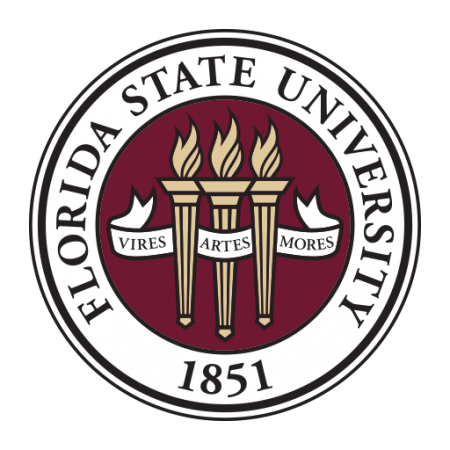
A Florida State University researcher whose work involves designing novel magnetic materials has won a coveted Faculty Early Career Development (CAREER) Award from the National Science Foundation (NSF).
Michael Shatruk is an assistant professor of chemistry and biochemistry. The award marks his second major successful NSF grant since September 2009.
“Although they are drastically different projects,” Shatruk said, “magnetism is the unifying theme.”
While it is highly unusual for a young professor to win two NSF grants at the same time, Shatruk explained that his two grants come from separate NSF divisions. His newer grant, worth $500,000 over five years, comes from the Division of Materials Research, while his earlier grant, worth $382,000 over three years, comes from the Division of Chemistry.
“Professor Shatruk has had a tremendous positive impact on research and teaching in our department,” said Joseph Schlenoff, chairman of the Department of Chemistry and Biochemistry and Florida State’s Mandelkern Professor of Polymer Science. “His leadership in materials science has stimulated collaborative activities across campus. We are delighted, but not surprised, that he has had this much success so early in his career.”
Shatruk, who joined the Florida State faculty in fall 2007 after postdoctoral fellowships at Cornell and Texas A&M, is an experimentalist. His overall research, as well as his lab space, are divided into two very different parts, although both involve magnetism.
The part of his research for which Shatruk received the NSF CAREER award focuses on solid-state chemistry and crystallography. This work is done in the dry part of his lab, where the materials being studied look, to a non-chemist, like dark gray sand when in a beaker. Shatruk said synthetic methods such as arc welding are especially appealing to undergraduate students who are drawn to perform research in his lab.
The other part of his lab space is devoted to work with liquids. It is the wet lab, where beakers are filled with, for example, bright orange or purple solutions. Ordinarily, Shatruk said, experimental chemists specialize in either solution-based (wet) or solid-state (dry) lab procedures, partly because of equipment and partly because of training. But because of his two postdoctoral experiences, Shatruk has one leg in each camp. At Cornell, he did solid-state chemistry, while at Texas A&M, he performed solution-based chemistry. “But I didn’t know much about magnetism until my postdoc at Texas A&M,” he said.
And now, it is magnetism that is the common theme in both aspects of Shatruk’s work. In research funded by the NSF CAREER grant, he and his team are looking at magnetic solids that combine elements from three different parts of the periodic table: the rare earth elements; the transition metals; and the nitrogen group, also known as the pnictogens.
In a nutshell, he is trying to create new magnets. While researchers already know that certain mixed metal combinations — for example, lanthanum, cobalt and phosphorous — are very promising magnetic materials, Shatruk and his team plan to tweak and improve the properties of these magnets by substituting other rare earth metals (such as europium) for the lanthanum, iron for the cobalt, and arsenic for the phosphorus.
Using X-ray diffraction and neutron diffraction, as well as other measurement methods, they will then analyze how these new combinations affect the material’s magnetic properties. They will also experiment with various methods of combining and heating the materials. Working with three and more chemical elements in a systematic fashion is much more complex than working with two elements, Shatruk said, because there are many more ways the constituents can be combined and heated, but there are also many more possibilities to create new materials with better magnetic properties.
“As a young researcher, I am excited to see that our science has received such generous support at the very outset of our projects,” he said. “It strengthens my conviction about the quality of the research that has been initiated in my labs. Most of all, it is very rewarding to see how these awards energize and motivate my students and propel their research careers.”
Born and raised in L’viv, a Ukrainian city not far from the Polish border, Shatruk may have been hardwired for an academic career in the sciences, given that his mother is a chemistry teacher and his father a biology teacher by training. Although Shatruk was undecided as a young teen whether he wanted to pursue a career in physics or chemistry, he remembers making his final decision after his mother dusted a sugar cube with ash and then ignited it. She then explained to her son that the ash acted as the catalyst; otherwise, the sugar would have melted. “Wow, that was really cool,” he said. Later, he attended Russia’s Moscow State University, receiving his Ph.D. in 2000.
When seeking a faculty position, Shatruk chose Florida State over other universities because of the strength and diversity of the chemistry department, as well as the presence of the National High Magnetic Field Laboratory. In addition, he liked the emphasis on collaboration.
“Nowadays, materials science is so interdisciplinary,” Shatruk said. “If you try to do everything by yourself, you fall behind. Besides that, I really like collaborative science, and it’s good for the students, too.” Two of Shatruk’s primary collaborators are Professor James Brooks of Florida State’s Department of Physics and the magnet lab and Professor Geoffrey Strouse of the Department of Chemistry and Biochemistry.




